Living in a world of fast changes facing digital marketing, innovation always pops up for businesses to reach their audience.
Among innovative moves, audio-only ads have become one of the critical arrows in the quiver for any modern marketer.
These formats take advantage of streaming’s ever-growing popularity, from platforms like Spotify to multiple podcast options, helping brands connect with users in a more intimate and engaging fashion.
But what are audio-only ads, and how will they revolutionize your advertising strategy?
In this article, we delve deep into the world of audio-only ads and podcast features in Google Ads.
From understanding their unique benefits to exploring how to effectively leverage them, you’ll gain insights to stay ahead in the competitive landscape of digital advertising.
- Understanding Audio-Only Ads in Google Ads
- Leveraging Podcast Features in Google Ads
- Creating Effective Audio Ad Campaigns
- Measuring and Optimizing Audio Ad Performance
- Future Trends in Audio Advertising with Google Ads
- The Power and Future of Audio-Only Ads in Google Ads
- Google Ads Audio-Only Ads: Frequently Asked Questions
Understanding Audio-Only Ads in Google Ads
Audio-only ads are a relatively new but increasingly popular format in the digital advertising sphere.
They are specifically designed for audio platforms like music streaming services, podcasts, and radio apps.
These ads rely on voice and sound to convey their message, offering a unique opportunity to engage with audiences who may not be actively looking at their screens.
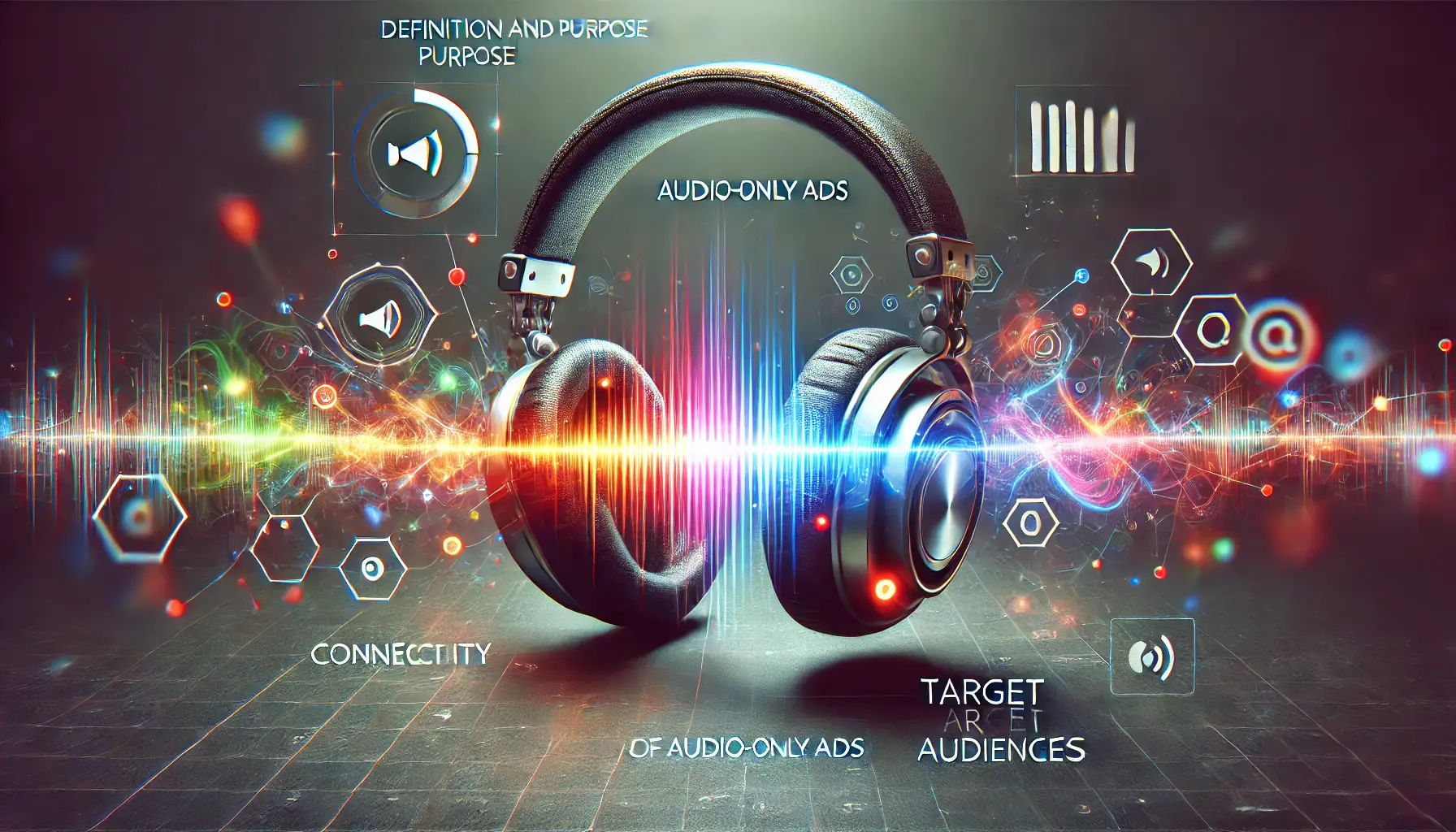
Illustration for ‘Definition and Purpose of Audio-Only Ads’
Definition and Purpose of Audio-Only Ads
At their core, audio-only ads are advertisements that focus entirely on audio content, eliminating the visual components typical of traditional digital ads.
These ads are perfect for scenarios where the audience is multitaskingThe ability to perform multiple tasks at the same time., such as driving, exercising, or cooking.
The purpose of these ads is to create a seamless listening experience while subtly introducing the brand’s message to the user.
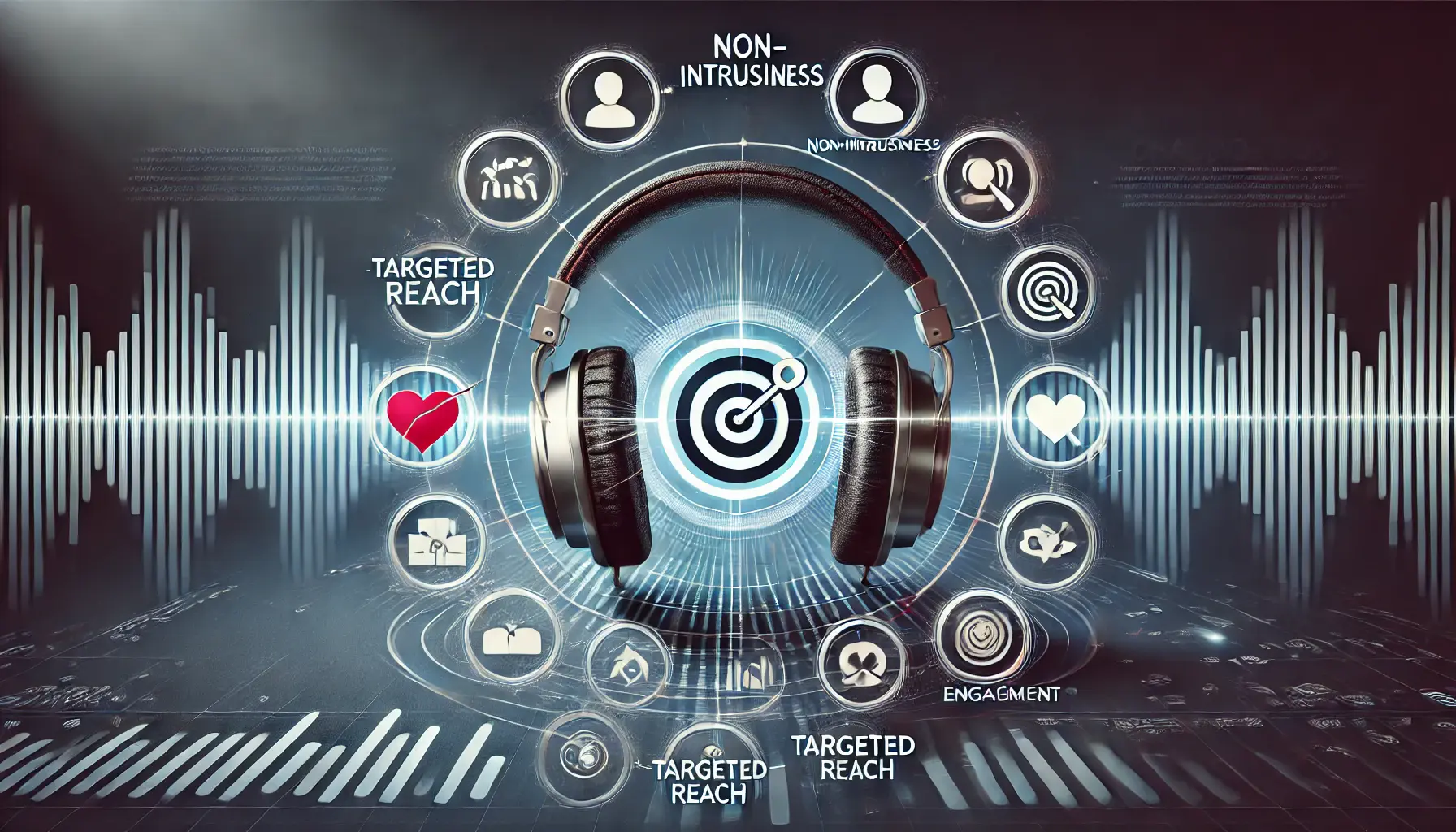
Illustration for ‘Key Features and Benefits’
Key Features and Benefits
Audio-only ads come with several key features and benefits that make them a standout choice for marketers:
- Non-intrusive format: They integrate seamlessly into audio content, making them less disruptive than other ad formats.
- Targeted reach: Google Ads allows advertisers to target specific demographics, interests, and behaviors, ensuring the ads reach the right audience.
- Increased engagement: Audio ads leverage the power of storytelling and sound design to create a memorable brand connection.
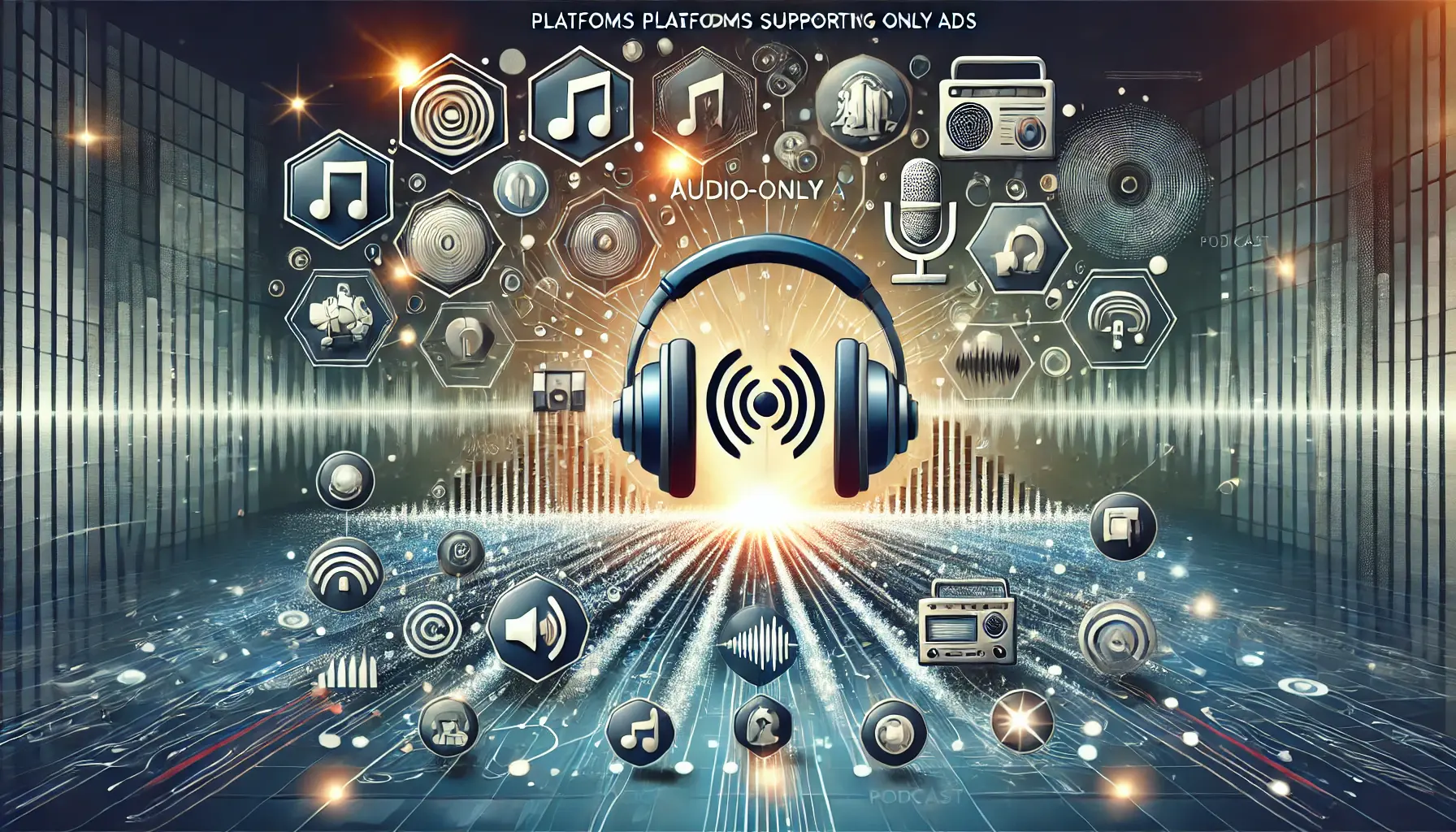
Illustration for ‘Platforms Supporting Audio-Only Ads’
Platforms Supporting Audio-Only Ads
Several platforms support audio-only ads, giving brands the flexibility to choose where they want to broadcast their messages.
These include:
- Music streaming platforms such as Spotify and Pandora
- Podcast networks
- Online radio stations
By leveraging these platforms, businesses can tap into a vast audience of highly engaged listeners who are more likely to absorb their message and take action.
Audio-only ads offer a unique way to engage audiences during multitasking moments, enhancing brand recall and connection.
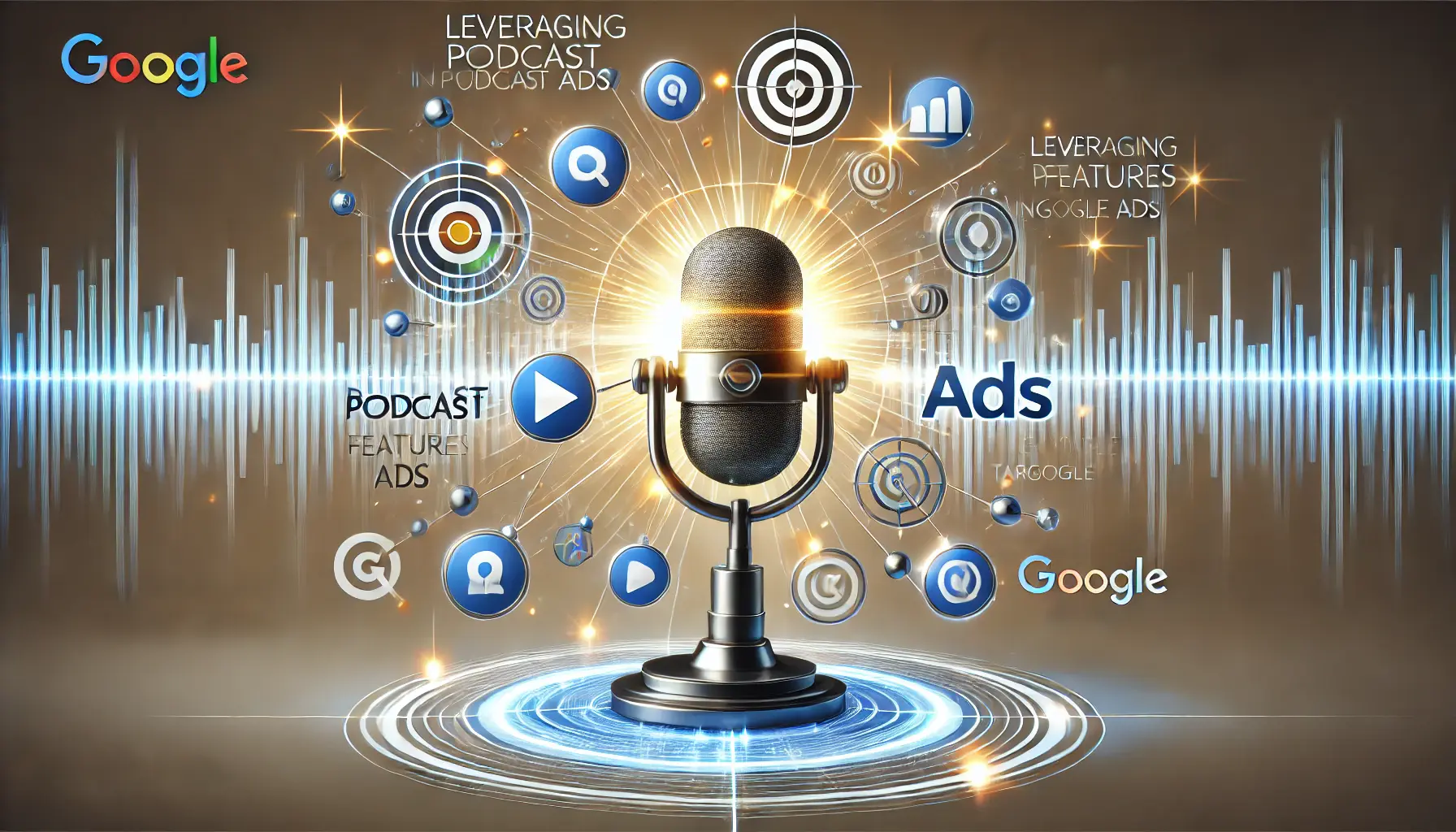
Illustration for ‘Leveraging Podcast Features in Google Ads’
Leveraging Podcast Features in Google Ads
Podcasts have become a significant medium for content consumption, offering advertisers a unique opportunity to reach engaged audiences.
Recognizing this trend, Google Ads has integrated podcast advertising features, enabling brands to connect with listeners effectively.

Illustration for ‘Introduction to Podcast Advertising’
Introduction to Podcast Advertising
Podcast advertising involves placing ads within podcast content, allowing brands to deliver their messages directly to listeners.
This method capitalizes on the intimate and focused nature of podcast listening, often leading to higher engagement compared to traditional advertising formats.
In October 2022, Google Ads expanded its reach by allowing advertisers to align their ads with podcast content globally.
By selecting ‘Podcast’ as a placement in audio or video campaigns, brands can reach podcast listeners across multiple platforms, including YouTube, which ranks as the second most used service for consuming podcasts in the U.S.
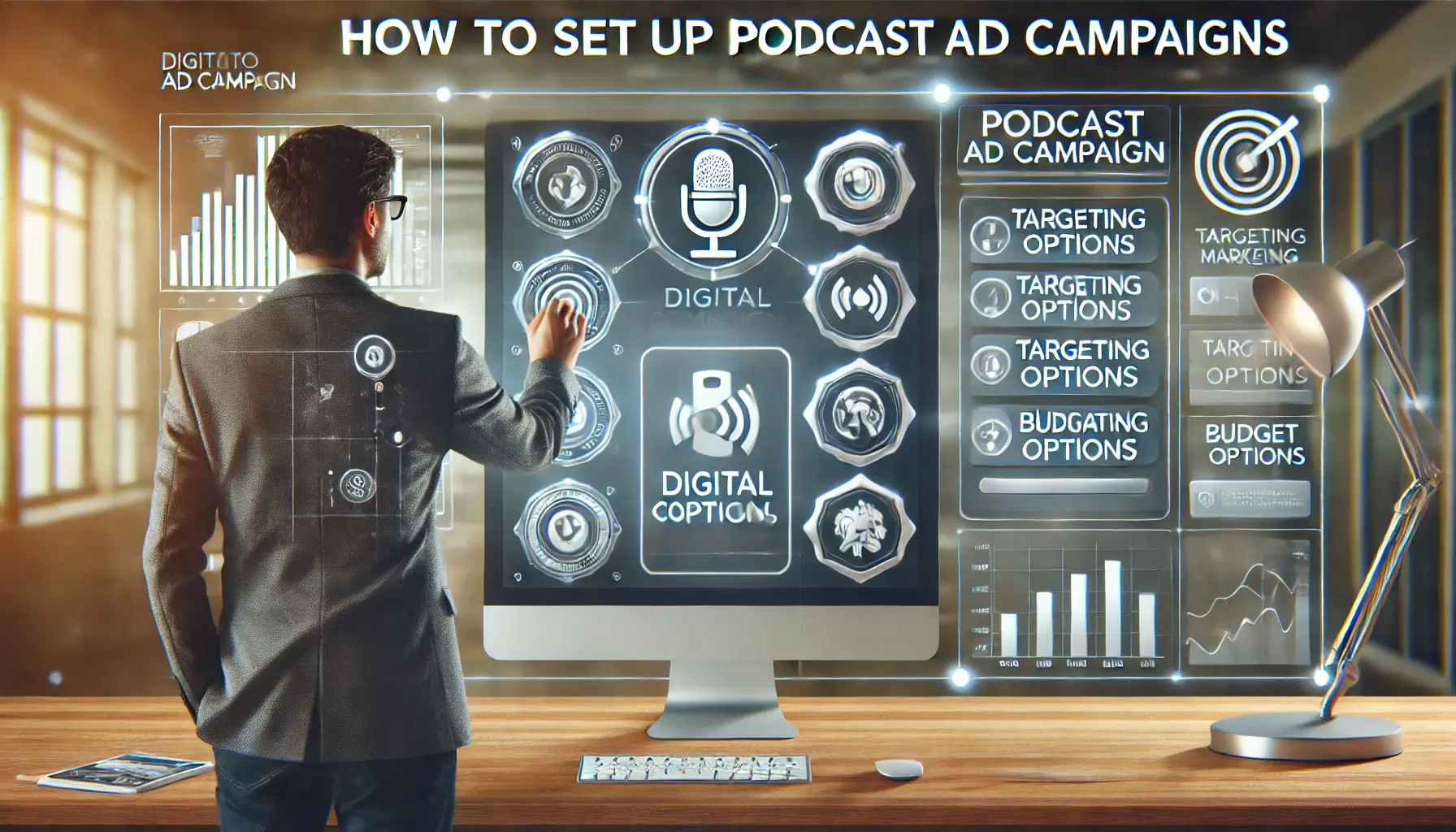
Illustration for ‘How to Set Up Podcast Ad Campaigns’
How to Set Up Podcast Ad Campaigns
To create a podcast ad in Google Ads, there are a few steps you will want to take:
- Determine Your Goals: Identify what you want to accomplish, whether that is increasing brand awareness, driving traffic to your website, or boosting product sales.
- Create Engaging Ad Creative: Produce high-quality audio or video ads that appeal to podcast listeners. Consider the tone and style of the podcasts where your ads will appear to ensure alignment.
- Select ‘Podcast’ Placement: In your Google Ads account, set up a new audio or video campaign and choose ‘Podcast’ as the placement to ensure your ads are served within podcast content.
- Set Your Budget and Bidding Strategy: Allocate a budget that aligns with your objectives and choose a bidding strategy, such as cost-per-click (CPC) or cost-per-thousand impressions (CPM), based on your campaign goals.
- Monitor and Optimize: Use Google Ads analytics to track performance metrics and adjust your campaign as needed to improve results.
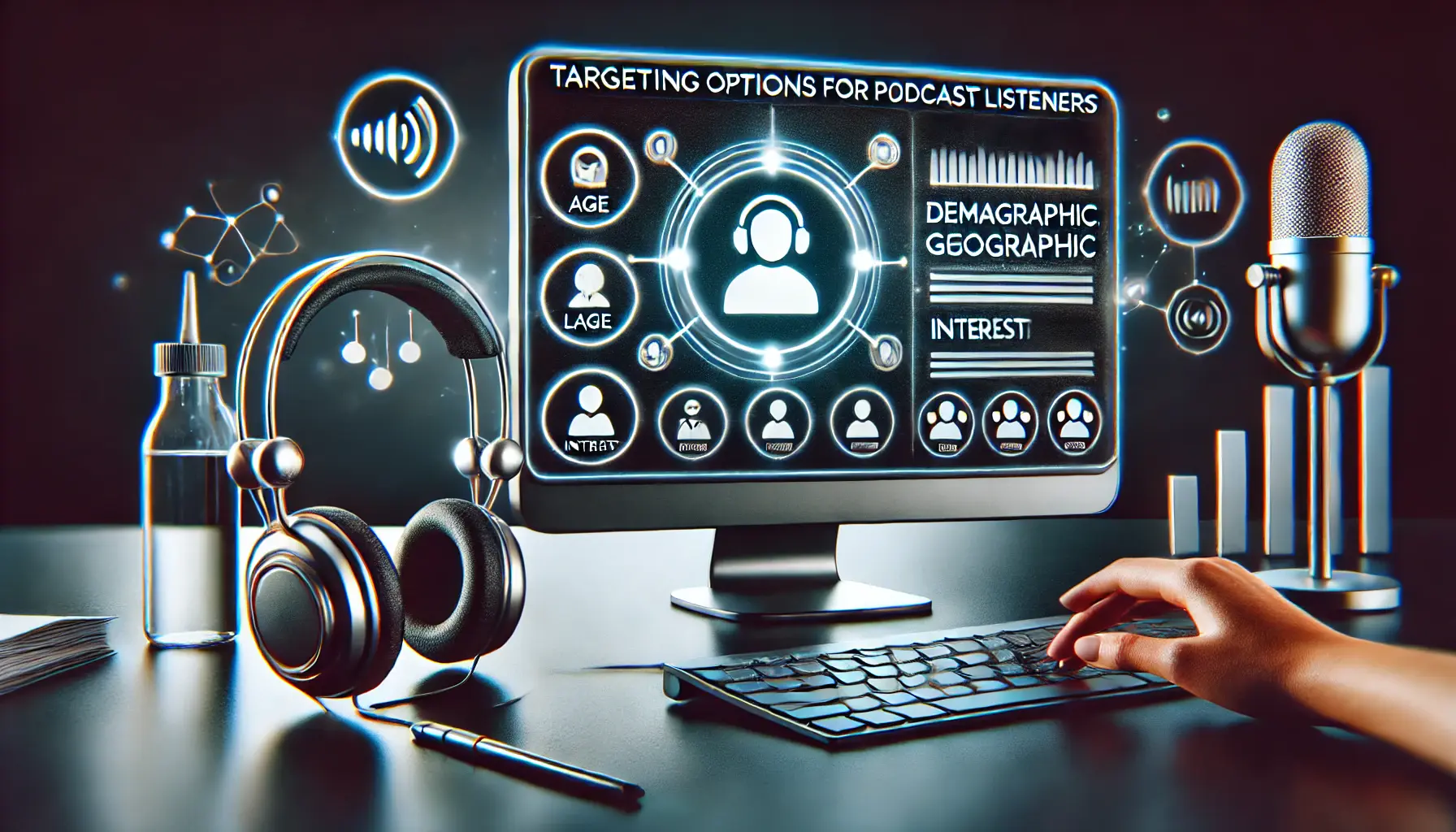
Illustration for ‘Targeting Options for Podcast Listeners’
Targeting Options for Podcast Listeners
Google Ads provides robust targeting options to ensure your podcast ads reach the right audience:
- Demographic Targeting: Target listeners based on age, gender, parental status, or household income.
- Geographic Targeting: Focus on specific locations, from countries and regions to cities and postal codes.
- Interest Targeting: Reach audiences based on their interests and online behaviors, ensuring relevance to your brand.
- Device Targeting: Choose to display ads on specific devices, such as mobile phones, tablets, or desktops, depending on where your target audience is most active.
By leveraging these targeting options, you can create more personalized and effective podcast ad campaigns, enhancing engagement and achieving your marketing objectives.
Incorporating podcast advertising into your digital marketing strategy with Google Ads allows you to tap into a growing medium, connect with engaged audiences, and deliver your brand message in a compelling and intimate format.
Podcasts represent an untapped market for many advertisers, providing a focused and intimate environment for delivering messages effectively.

Illustration for ‘Creating Effective Audio Ad Campaigns’
Creating Effective Audio Ad Campaigns
In the dynamic world of digital marketing, crafting compelling audio ad campaigns is essential for capturing your audience’s attention.
Let’s explore some best practices to ensure your audio ads resonate and drive results.
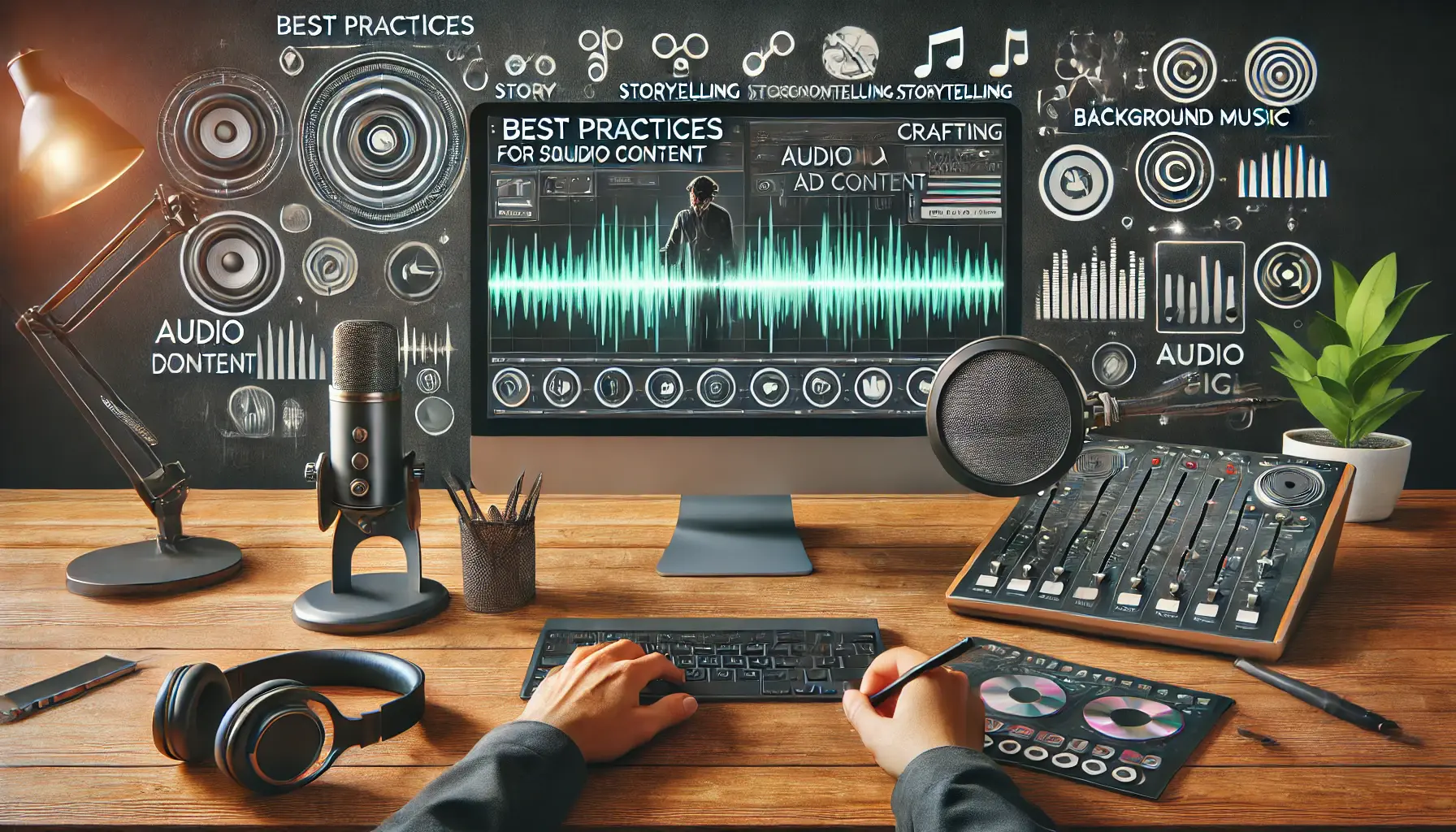
Illustration for ‘Best Practices for Crafting Audio Ad Content’
Best Practices for Crafting Audio Ad Content
Creating impactful audio-only ads involves several key strategies:
- Stay on Message: Keep your ad focused on one or two key takeaways. A short message makes listeners more engaged and attentive. For a 30-second ad, aim for no more than 60-80 words.
- Introduce the Brand Early: Mention your brand within the first five seconds to establish a connection and reinforce brand recall. Early brand mentions drive stronger favorability and intent.
- Use Appropriate Background Music: Choose music that enhances your message instead of overpowering it. Instrumental tracks without vocals work best, avoiding competition with the voiceover. Ads with background music score higher on intent compared to those without.
- Tell a Story: Weave a compelling story that resonates emotionally, allowing listeners to connect with your ad on a deeper level.
- Know Your Audience: Understand who you are talking to and what they want to hear. Tailor your audio content to reflect their preferences for enhanced engagement.
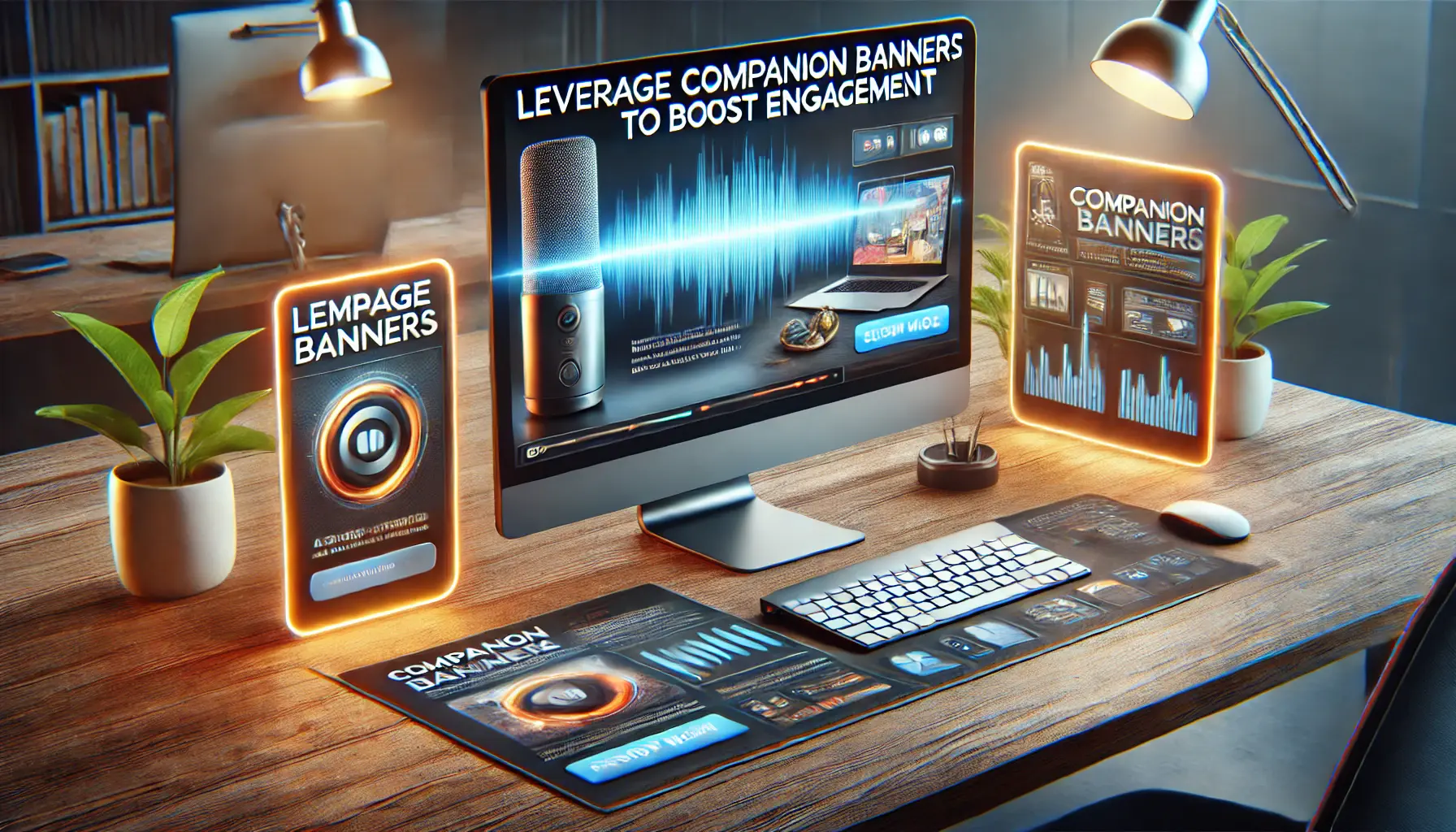
Illustration for ‘Leverage Companion Banners to Boost Engagement’
Leverage Companion Banners to Boost Engagement
Enhance your audio ads with companion banners:
- Visual Reinforcement: Companion banners provide a visual element that reinforces your audio message, increasing brand recall.
- Call-to-Action (CTA): Include a clear CTA in your banner to drive immediate listener action, such as visiting your website or making a purchase.
- Consistency: Ensure the design and messaging of the banner align with the audio ad for a cohesive brand experience.

Illustration for ‘Case Studies of Successful Audio Ad Campaigns’
Case Studies of Successful Audio Ad Campaigns
Learning from successful campaigns can offer valuable insights:
- Grammarly’s Spotify Campaign: Grammarly utilized Spotify’s platform to run music streaming ads. By focusing the messaging and introducing the brand early, they achieved higher engagement rates.
- Allbirds Programmatic Audio Integration: Allbirds incorporated programmatic audio into their marketing mix, effectively engaging their target audience and enhancing brand awareness.
- South Bay Paints Moving to Digital Audio: A regional chain transitioned from traditional radio advertising to digital audio advertising, resulting in increased reach and customer engagement.
By following these best practices and learning from successful case studies, you can create audio ad campaigns that effectively engage your audience and drive your marketing objectives forward.
Compelling storytelling and early brand mentions in audio ads significantly boost engagement and listener retention.

Illustration for ‘Measuring and Optimizing Audio Ad Performance’
Measuring and Optimizing Audio Ad Performance
Effectively measuring and optimizing your audio ad campaigns in Google Ads is critical for maximizing return on investment.
By focusing on key performance metrics and employing best practices, you can enhance the impact of your audio-only ads.

Illustration for ‘Key Metrics to Monitor’
Key Metrics to Monitor
Monitoring the right metrics provides insights into your campaign’s effectiveness:
- Impressions: The number of times your ad is displayed, indicating its reach.
- Clicks: The count of user interactions with your ad, reflecting engagement levels.
- Click-Through Rate (CTR): The ratio of clicks to impressions, measuring ad relevance and effectiveness.
- Conversions: The number of desired actions taken by users after interacting with your ad, such as purchases or sign-ups.
- Cost Per Conversion (CPC): The average amount spent to achieve a conversion, assessing cost-effectiveness.
- Return on Ad Spend (ROAS): The revenue generated for every dollar spent on advertising, evaluating overall campaign profitability.
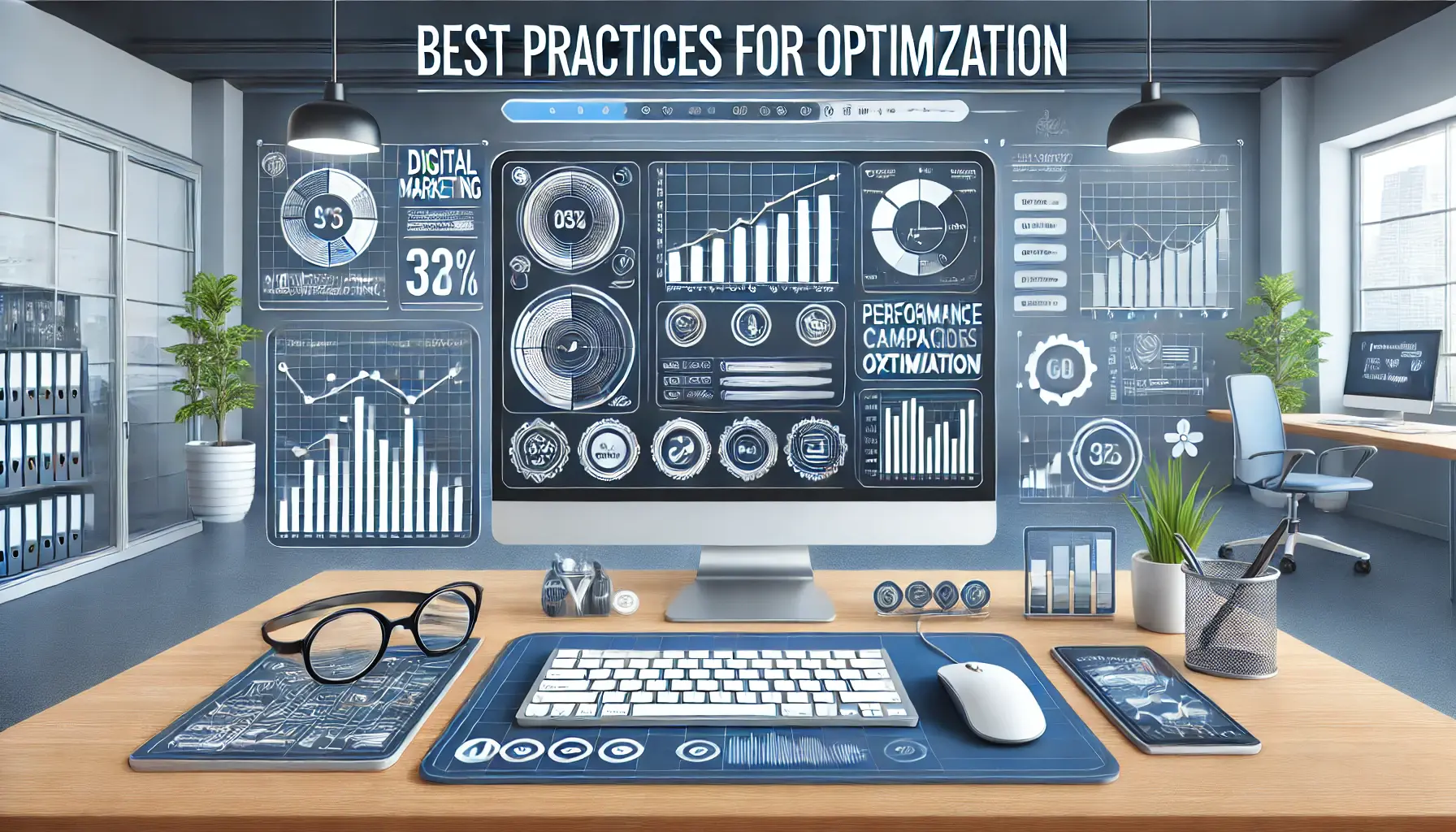
Illustration for ‘Best Practices for Optimization’
Best Practices for Optimization
Implementing these strategies can enhance your audio ad performance:
- Regular Performance Analysis: Consistently review your campaign metrics to identify trends and areas for improvement.
- A/B Testing: Experiment with different ad creatives, messages, and targeting options to determine what resonates best with your audience.
- Audience Segmentation: Tailor your ads to specific audience segments to increase relevance and engagement.
- Budget Allocation: Allocate more budget to high-performing ads and consider adjusting bids based on performance data.
- Ad Frequency Management: Monitor ad frequency to prevent listener fatigue and ensure a positive user experience.
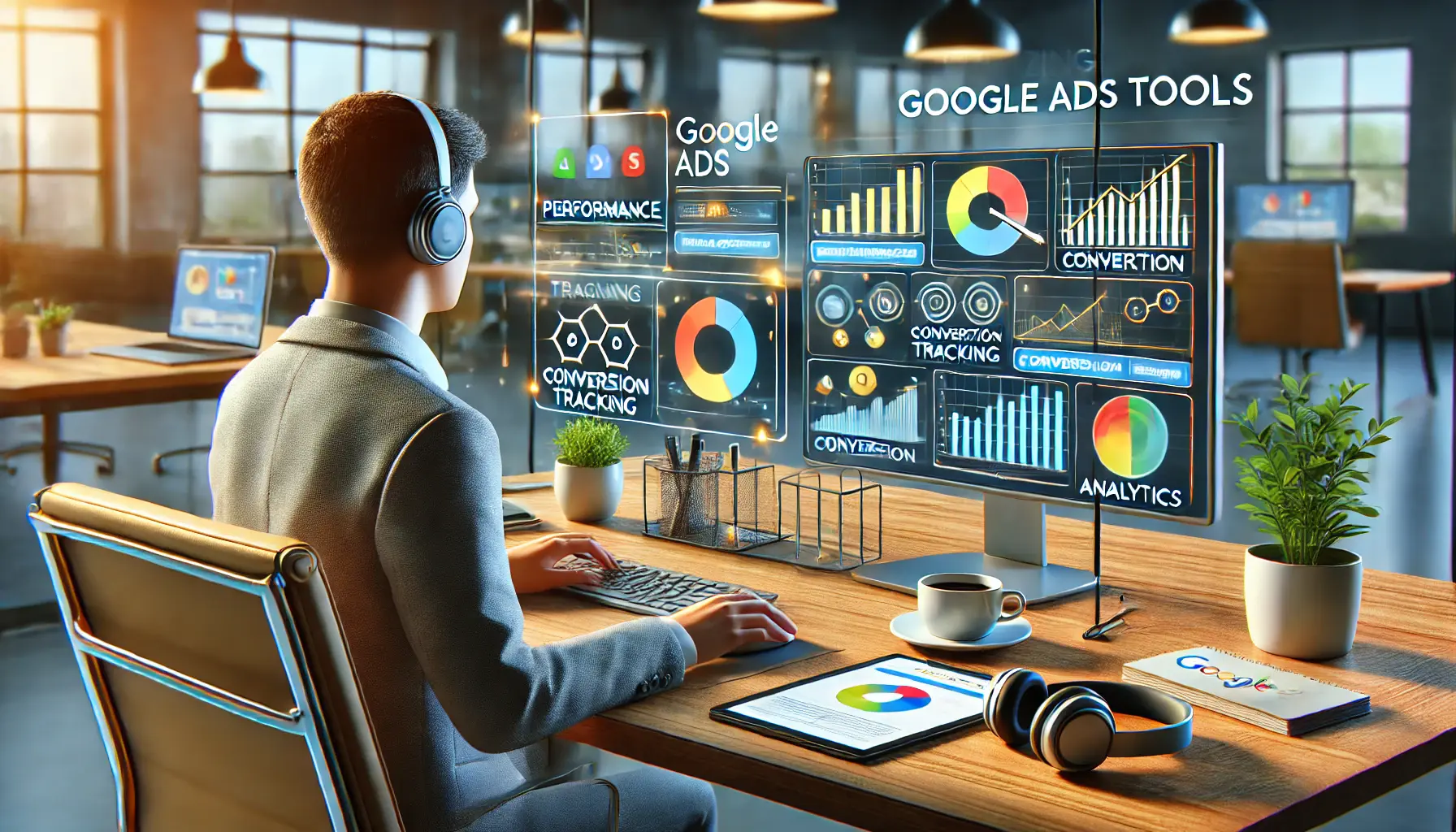
Illustration for ‘Utilizing Google Ads Tools’
Utilizing Google Ads Tools
Google Ads offers several tools to assist in measuring and optimizing your audio ad campaigns:
- Performance Planner: Forecasts how changes to campaigns might affect key metrics and overall performance.
- Conversion Tracking: Monitors the actions users take after interacting with your ads, providing insight into campaign effectiveness.
- Google Analytics Integration: Offers deeper analysis of user behavior on your website post-ad interaction, aiding in comprehensive performance assessment.
By diligently monitoring these metrics, applying optimization best practices, and leveraging Google Ads tools, you can enhance the effectiveness of your audio-only ad campaigns, ensuring they contribute positively to your marketing objectives.
Using Google Ads tools like Conversion Tracking and Performance Planner ensures data-driven decisions for optimizing ad performance.
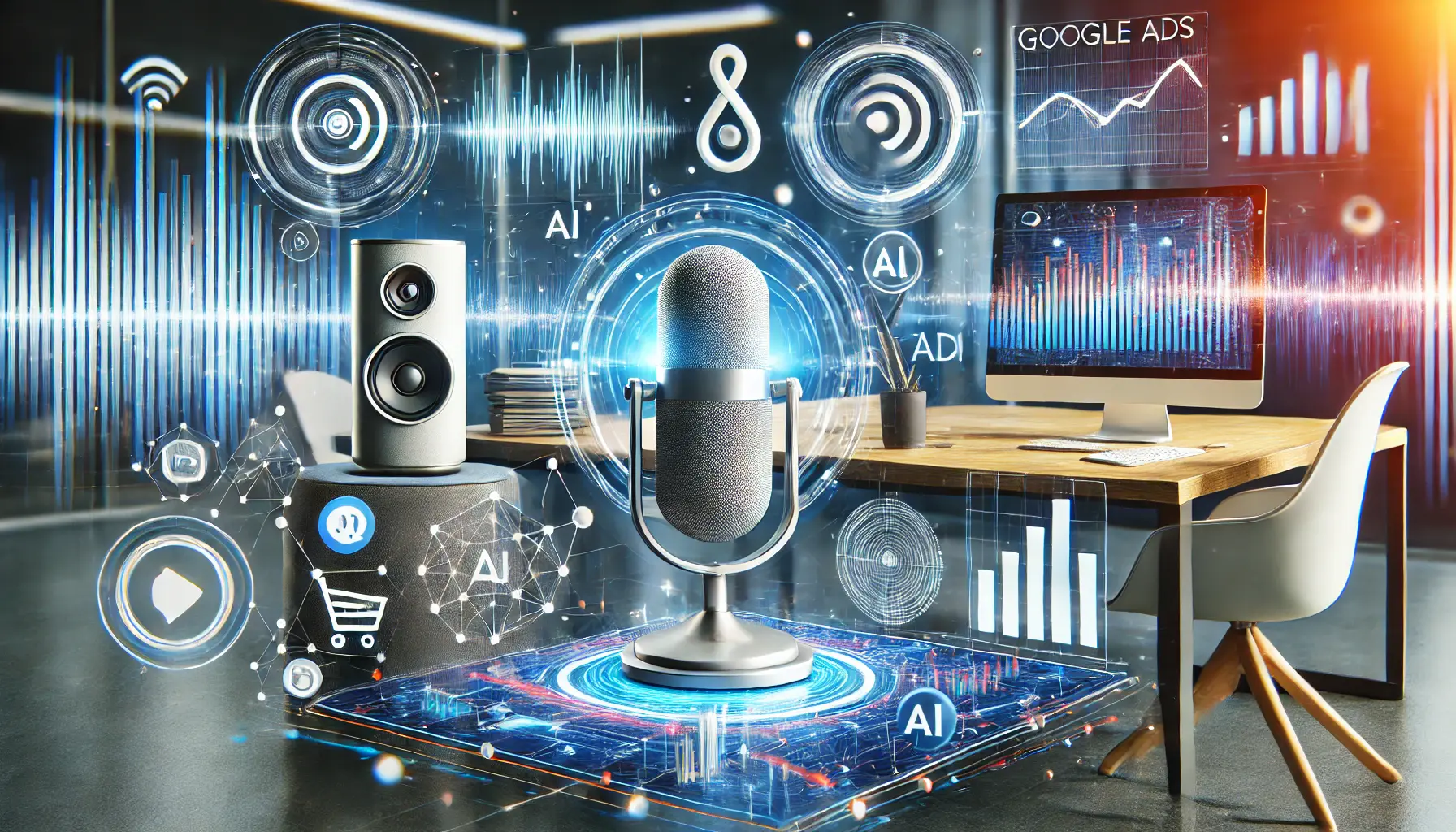
Illustration for ‘Future Trends in Audio Advertising with Google Ads’
Future Trends in Audio Advertising with Google Ads
With the continuous evolution of digital marketing, audio advertising has emerged as one of the most dynamic channels for reaching audiences.
Understanding future trends can help you utilize audio-only ads in Google Ads more efficiently.
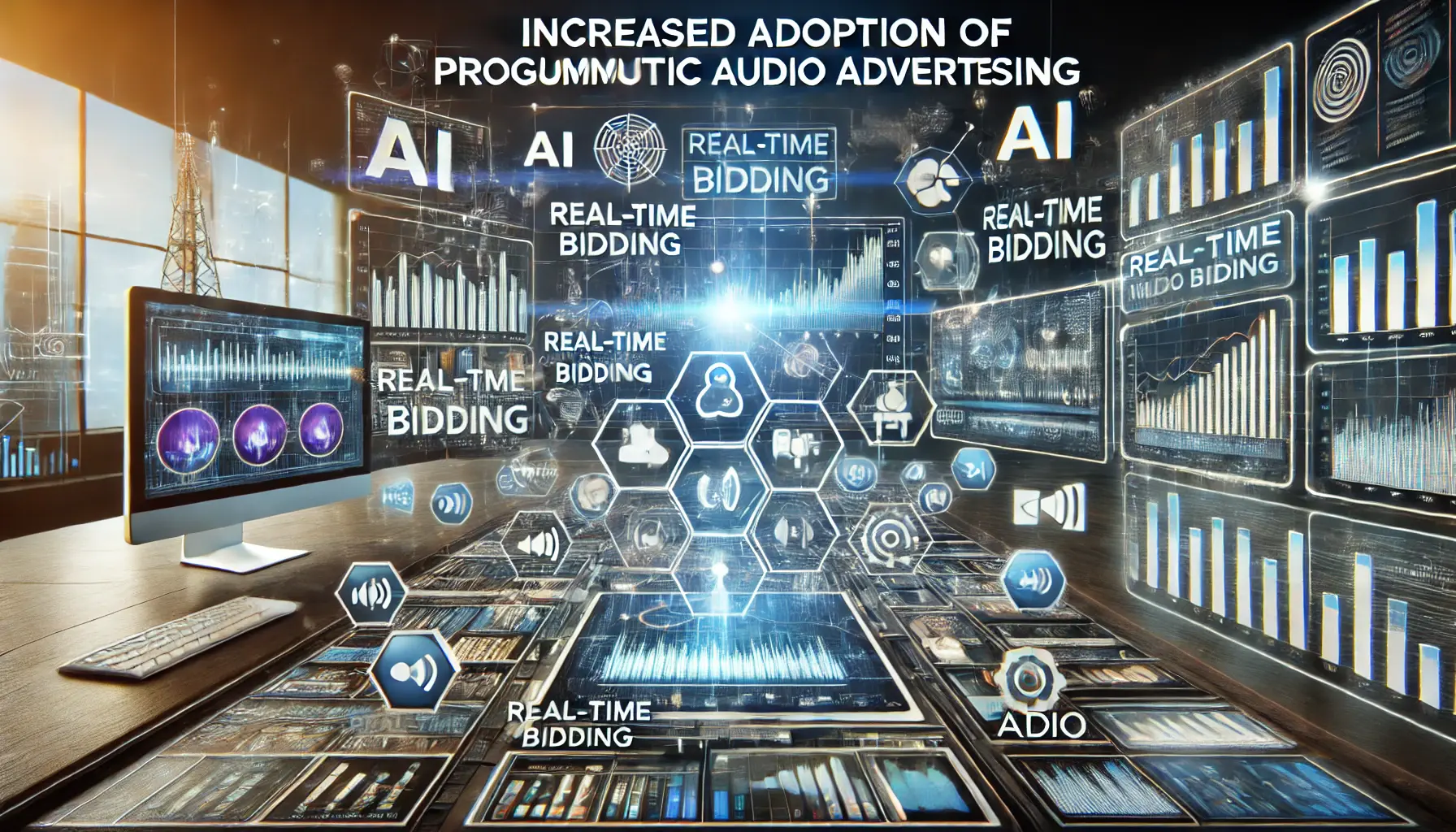
Illustration for ‘Increased Adoption of Programmatic Audio Advertising’
Increased Adoption of Programmatic Audio Advertising
Programmatic advertising automates the buying and selling of ad space, making the process more efficient by enhancing precision in targeting.
On audio platforms, this approach is gaining traction, enabling real-time bidding and personalization of ad experiences.
By the end of 2024, nearly a quarter of all digital audio ads are expected to be transacted programmatically, reflecting a significant shift towards automation in the industry.

Illustration for ‘Rise of Interactive Voice-Activated Ads’
Rise of Interactive Voice-Activated Ads
Interactive voice-activated ads are transforming audience engagement by allowing listeners to interact with advertisements using voice commands.
This innovation creates immersive experiences and enables real-time interactions between brands and consumers.
With the rise of voice assistants and smart speakersVoice-activated devices like Amazon Echo or Google Nest that can perform tasks based on voice commands., businesses are leveraging this trend to build meaningful connections and foster real-time consumer interactions.
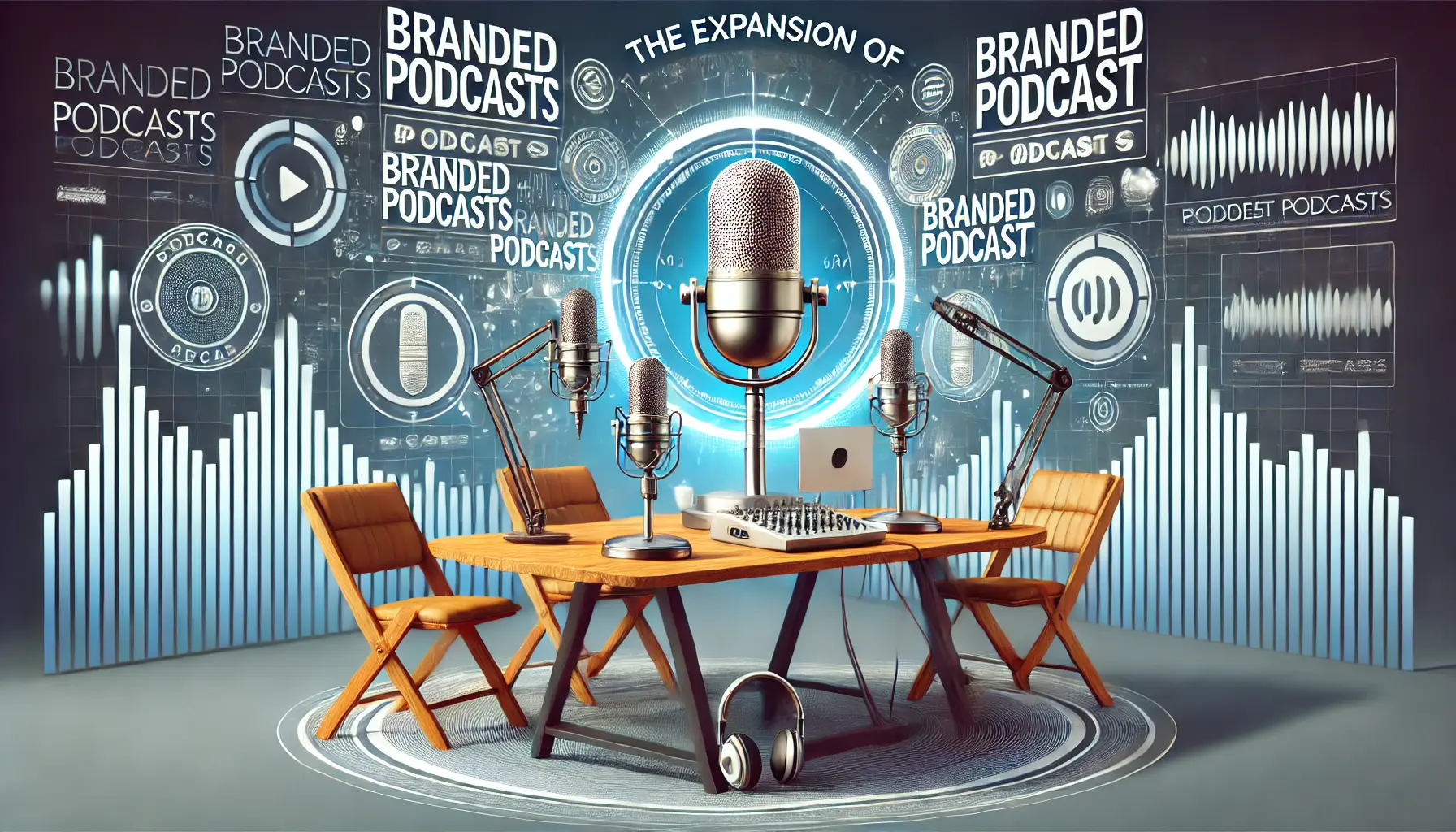
Illustration for ‘Expansion of Branded Podcasts’
Expansion of Branded Podcasts
Branded podcasts provide companies with a platform to share their narratives with targeted audiences, building trust and authority within their industries.
By creating content that reflects their values, brands can connect with listeners in a more intimate and enduring way.
This approach enables them to deliver messages in an organic, personal manner, fostering deeper engagement and higher conversion rates.

undefined
Integration of AI and Machine Learning
Audio advertising is set to be disrupted by the integration of AI and Machine Learning, which enable the creation and optimization of dynamic ads in real-time.
These technologies analyze user behavior to deliver personalized content, enhancing engagement and campaign effectiveness.
AI-driven targeting ensures that brands serve relevant content in real-time, optimizing ad placements and budgets for maximum ROIReturn on Investment; a measure of the profitability of an investment relative to its cost..

Illustration for ‘Improved Measurement and Attribution’
Improved Measurement and Attribution
Advancements in analytics are improving the ability to measure the effectiveness of audio ads accurately.
Enhanced attributionThe process of identifying which actions or touchpoints contribute to achieving a specific outcome, such as a conversion. models provide deeper insights into listener behavior, enabling marketers to refine strategies and demonstrate ROI more effectively.
This allows brands to measure the success of podcast advertising by tracking and evaluating leads or responses directly generated from their ads.
By staying ahead of these trends and incorporating them into your marketing strategy, you can unlock the full potential of audio-only ads in Google Ads, ensuring your brand remains at the forefront of digital advertising innovation.
AI-driven personalization and programmaticAn automated method of buying and selling ad space using software instead of traditional negotiations. advertising are revolutionizing the audio ad industry, making campaigns more effective and efficient.
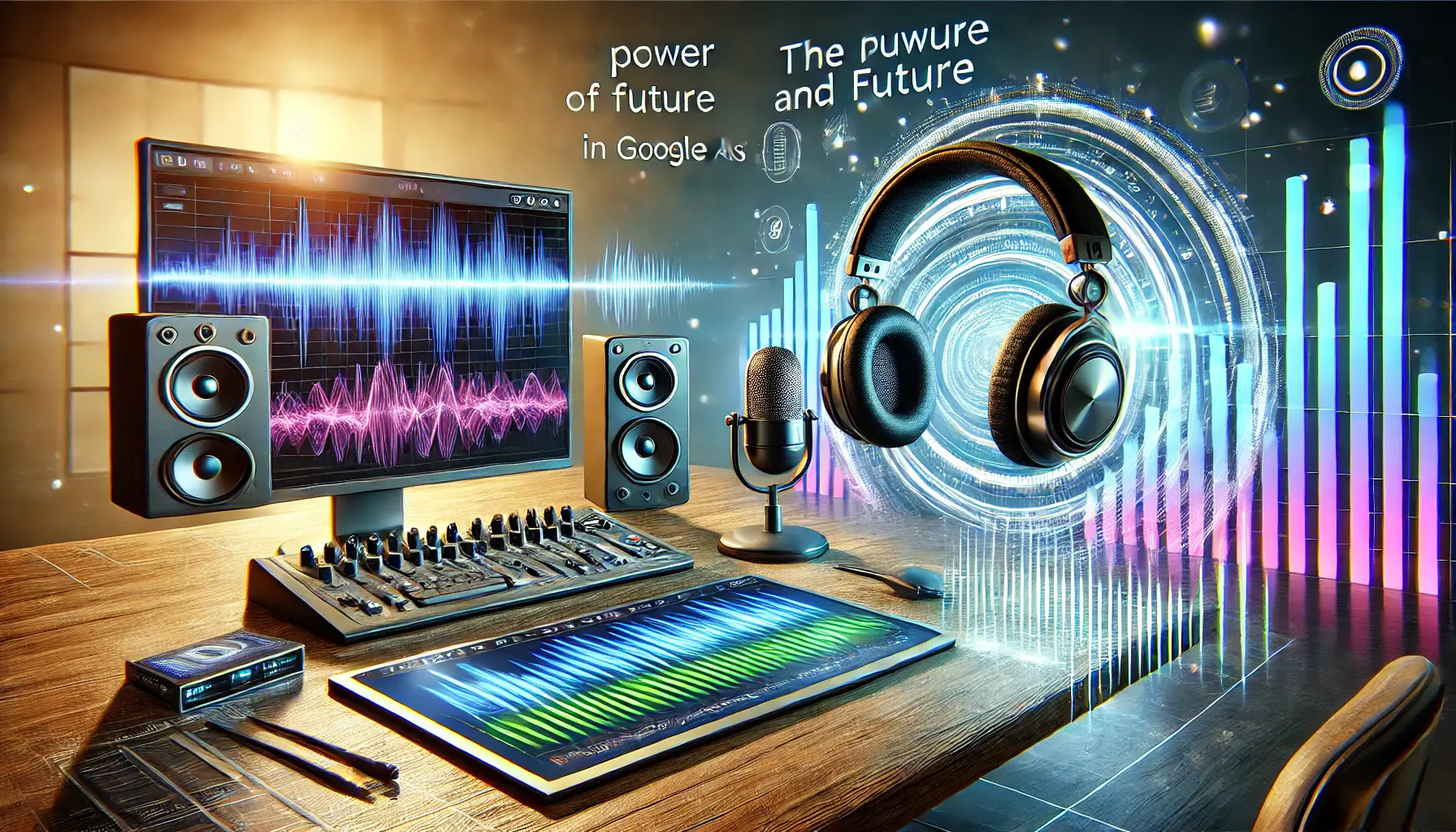
Illustration for ‘The Power and Future of Audio-Only Ads in Google Ads’
The Power and Future of Audio-Only Ads in Google Ads
Audio-only ads have emerged as a revolutionary force in the world of digital marketing, enabling businesses to reach their audiences in new, innovative, and engaging ways.
By leveraging Google Ads, marketers can harness the full potential of audio platforms to connect with their target demographics effectively.

Illustration for ‘Recapping Key Insights’
Recapping Key Insights
This article explored various aspects of audio-only ads and podcast features in Google Ads:
- Understanding the purpose and benefits of audio-only ads, including their ability to capture attention in multitasking environments.
- Exploring the integration of podcast features within Google Ads and how they offer unique targeting opportunities.
- Best practices for crafting effective audio ad campaigns, focusing on concise messaging, storytelling, and brand recall.
- Strategies for measuring and optimizing campaign performance by monitoring key metrics and utilizing Google Ads tools.
- Future trends in audio advertising, such as programmatic audio, voice-activated ads, branded podcasts, AI-driven targeting, and enhanced attribution.
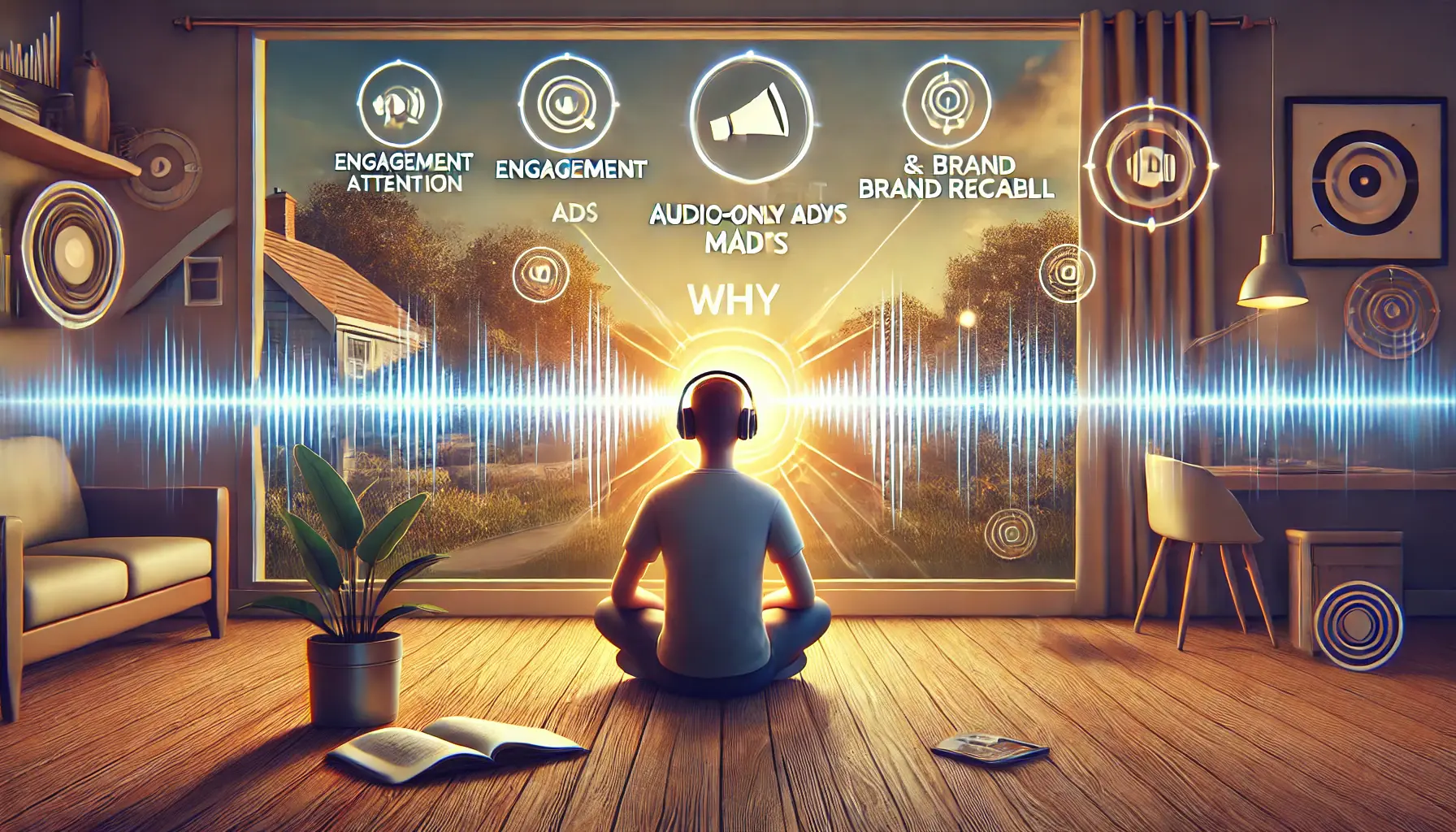
Illustration for ‘Why Audio-Only Ads Matter’
Why Audio-Only Ads Matter
Audio-only ads provide an intimate and highly engaging medium that aligns with modern consumer habits.
With the rise of podcasts, streaming services, and smart speakers, audio advertising bridges the gap between brands and their audiences in ways that visual and text-based formats often cannot.
The ability to personalize ads and interact with consumers in real-time amplifies their effectiveness and ROI.
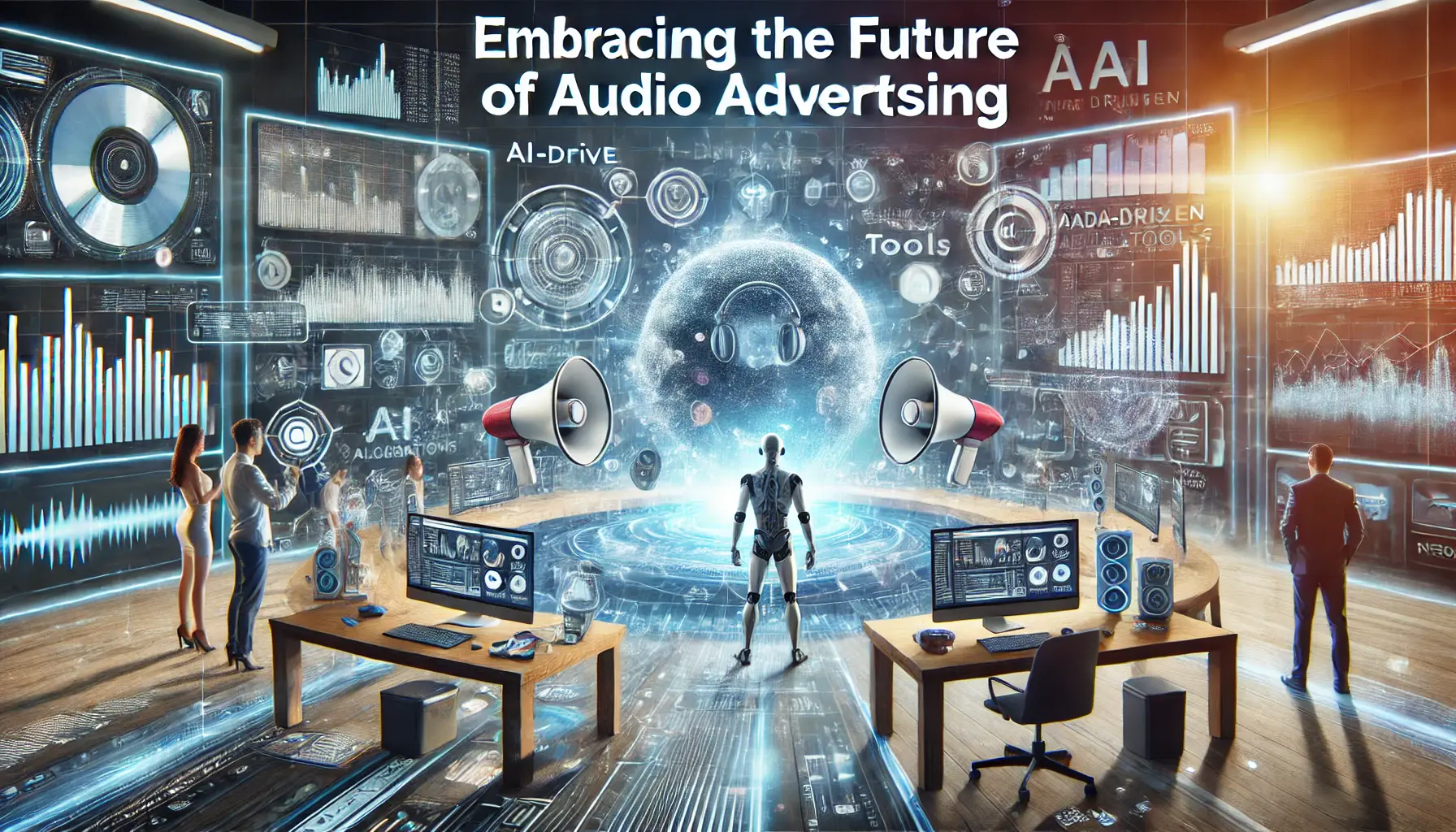
Illustration for ‘Embracing the Future of Audio Advertising’
Embracing the Future of Audio Advertising
Innovation is the future of audio advertising.
As AI and Machine Learning continue to evolve, these technologies enable advertisers to deliver highly targeted, optimized content.
Meanwhile, trends in programmatic advertising and voice-activated interactions are reshaping how brands connect with consumers, cementing audio ads as a cornerstone of every marketer’s strategy.
By capitalizing on these trends and adhering to best practices, businesses can gain a competitive edge in the ever-changing digital advertising landscape.
Audio-only ads are not just an addition to your marketing toolkit; they are a gateway to deeper audience engagement and long-term brand loyalty.
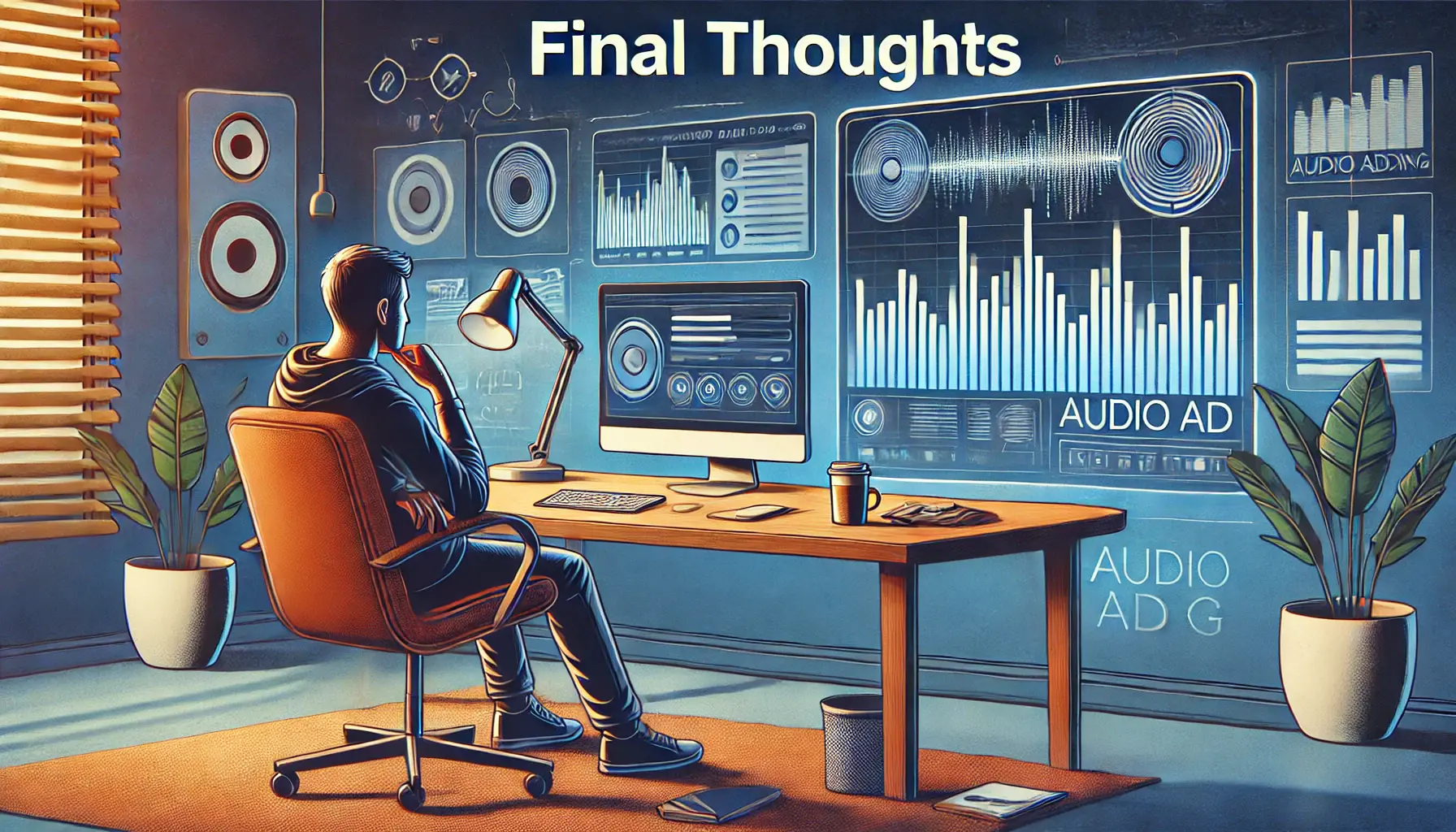
Illustration for ‘Final Thoughts’
Final Thoughts
Incorporating audio-only ads into your Google Ads campaigns can help your business connect with audiences in meaningful and memorable ways.
By implementing the knowledge and strategies shared in this article, you can harness the power of audio advertising to drive results and stay ahead in the ever-evolving world of marketing innovation.
Audio-only ads are more than just an advertising tool—they are a gateway to fostering deep audience connections and brand loyalty in the modern era.
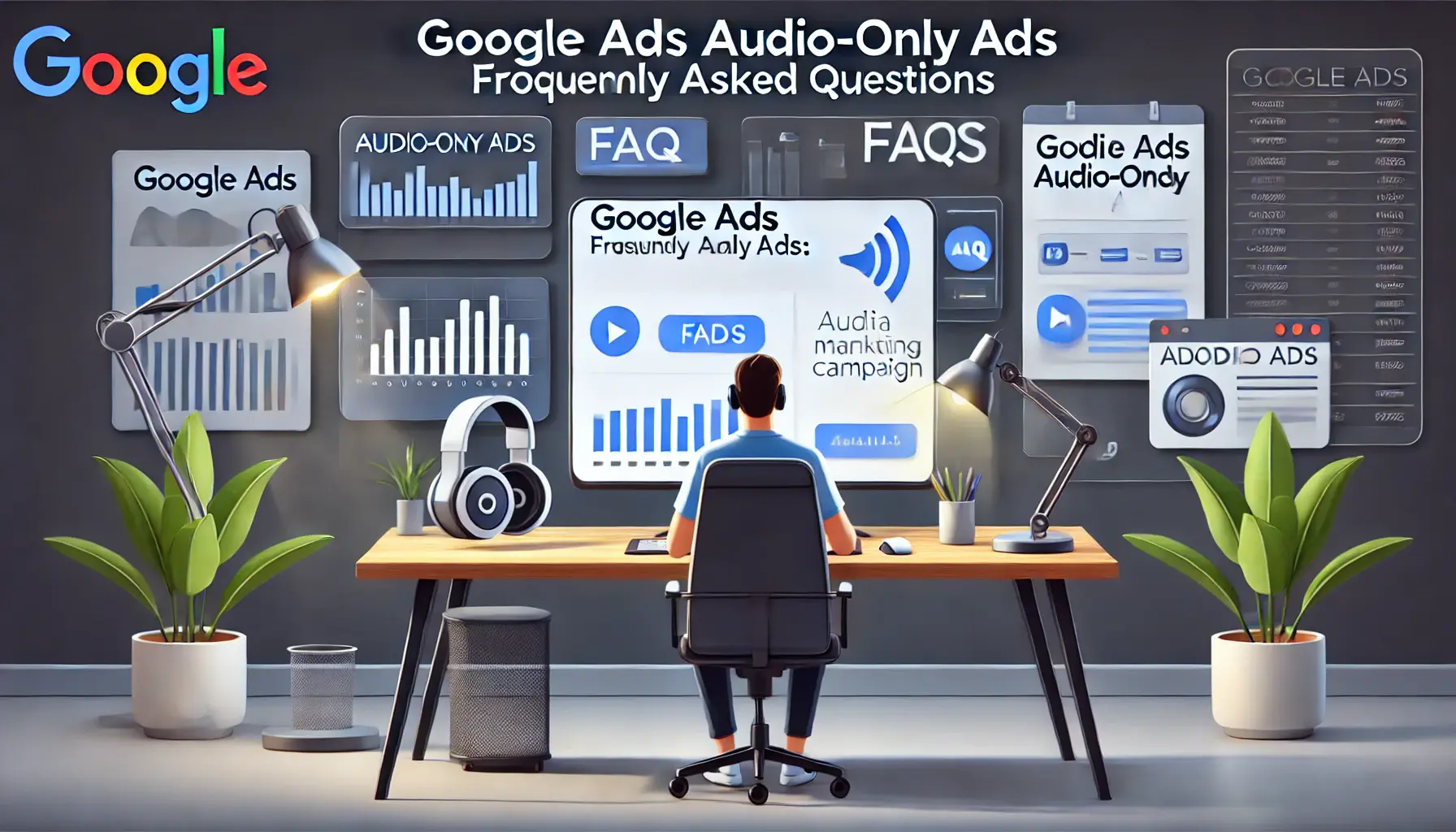
Illustration for ‘Google Ads Audio-Only Ads: Frequently Asked Questions’
Your campaigns can be managed by an agency specialized in Google Ads, check out our service page.
Google Ads Audio-Only Ads: Frequently Asked Questions
As businesses begin to explore the possibilities of audio-only ads in Google Ads, several common questions arise.
Here are concise answers to some of the most frequently asked questions on this topic:
Audio-only ads are advertisements that consist solely of audio content, designed to engage users on platforms like music streaming services, podcasts, and radio apps.
To create an audio-only ad campaign, select the ‘Audio’ campaign type in Google Ads, upload your audio creative, set targeting options, and define your budget and bidding strategyA tactic in advertising platforms like Google Ads that determines how an advertiser bids for ad placements..
Audio-only ad formats are supported on platforms like Spotify, podcast networks, and online radio stations.
The advantages include the ability to reach audiences during non-screen activities, creating intimate brand experiences, and leveraging the growing trend of consuming audio content.
Yes, Google Ads allows targeting based on demographics, interests, behaviors, and geographic locations to reach your desired audience effectively.
Performance can be measured using metrics like impressions, clicks, click-through rate (CTR), conversions, and return on ad spend (ROAS) available in Google Ads analytics.
While not mandatory, companion banners provide a visual element alongside your audio ad, reinforcing your message and offering additional engagement opportunities.
Optimal lengths vary, but typically, 15 to 30-second audio ads are effective in delivering concise and engaging messages to listeners.
It’s recommended to create dedicated audio content, as repurposing video ads may not effectively engage listeners without visual elements.
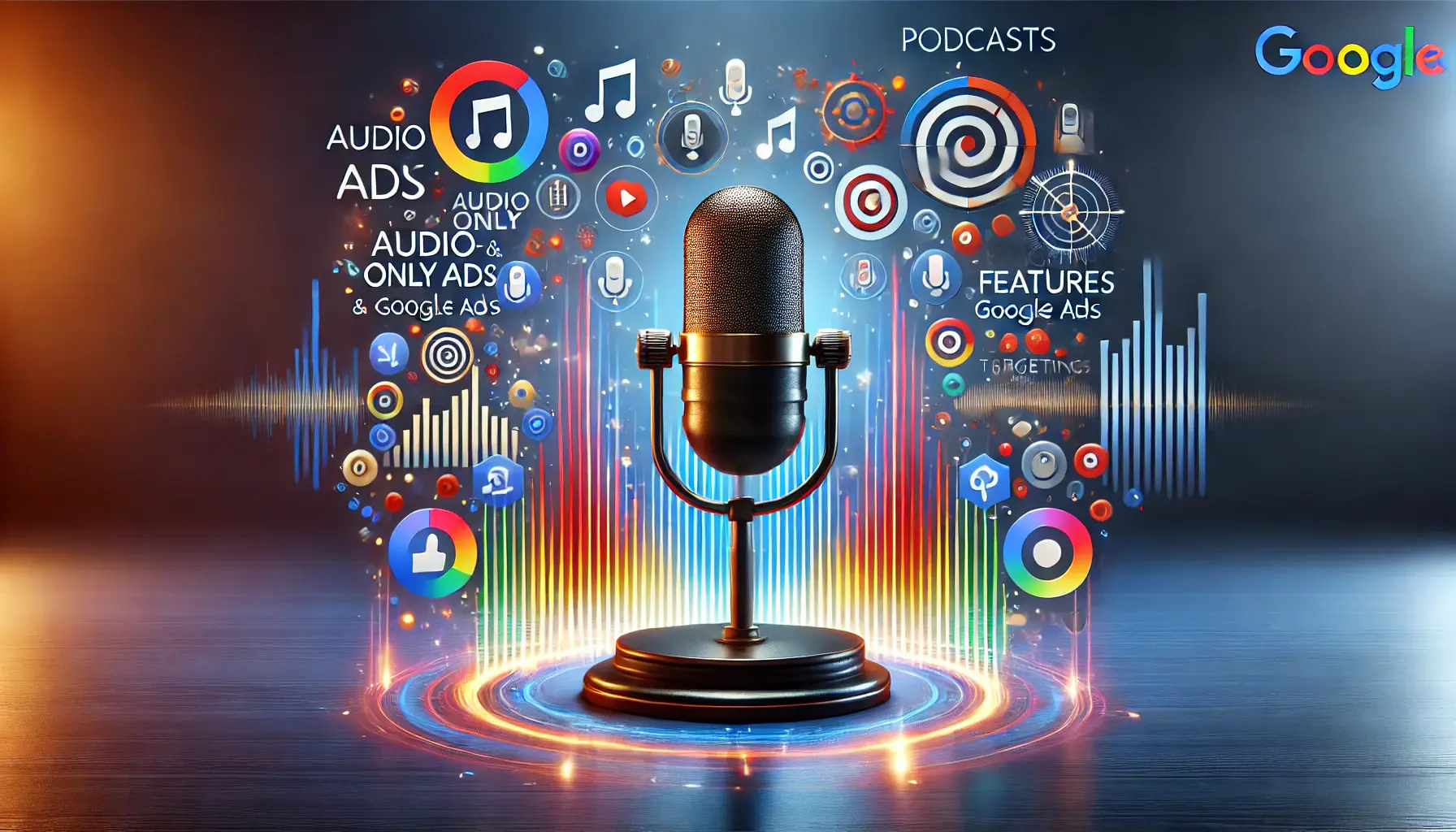
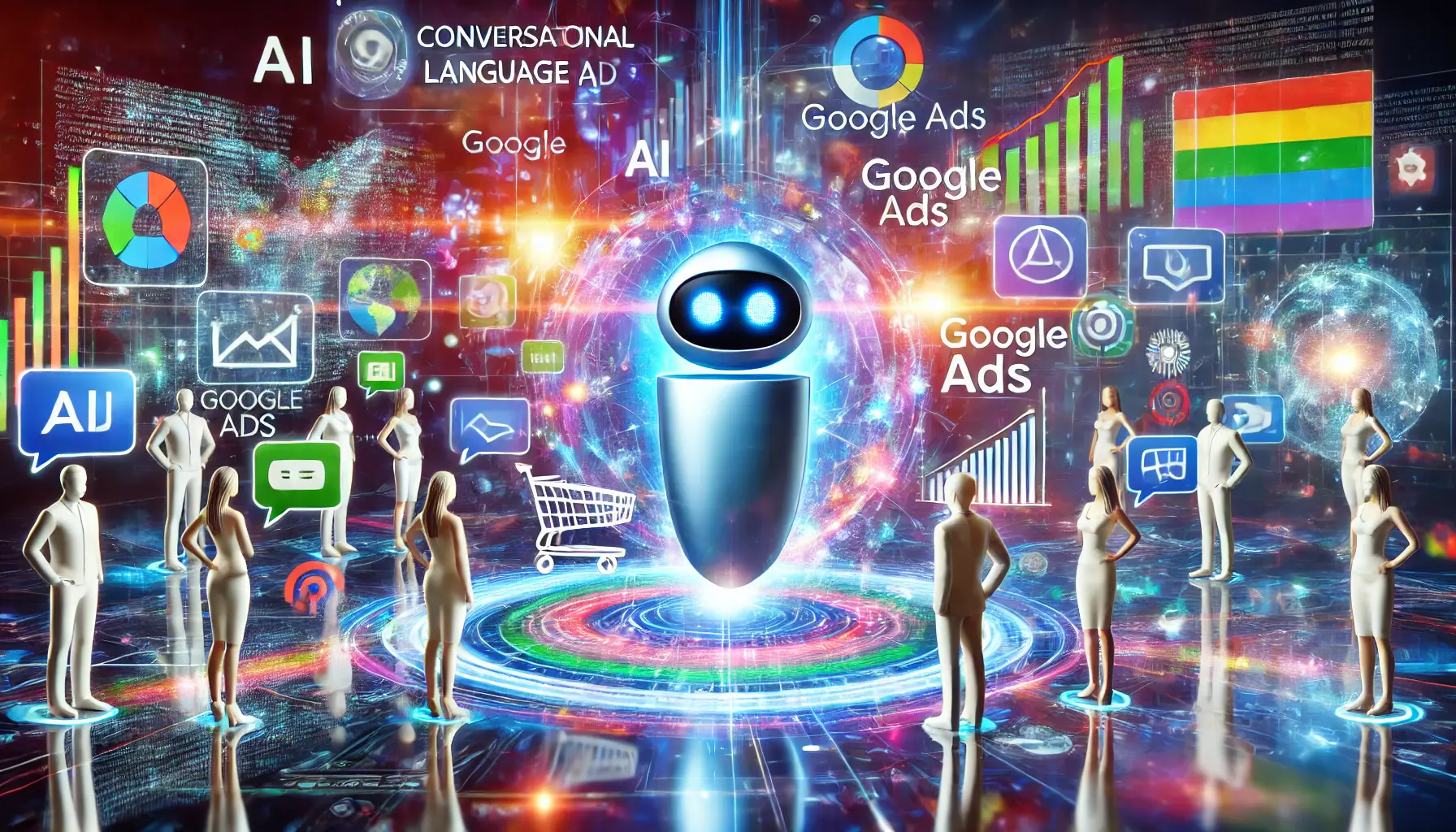


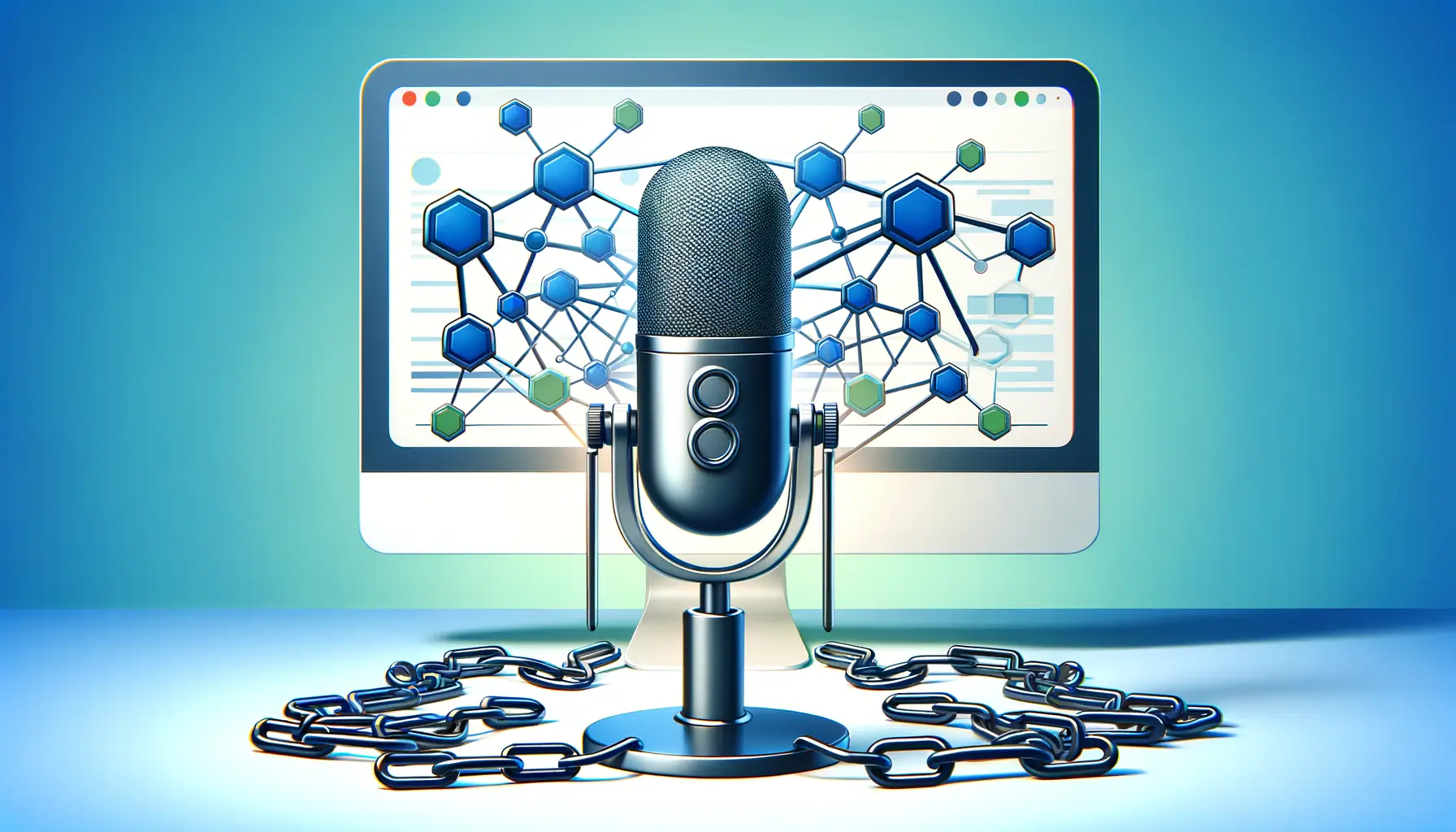

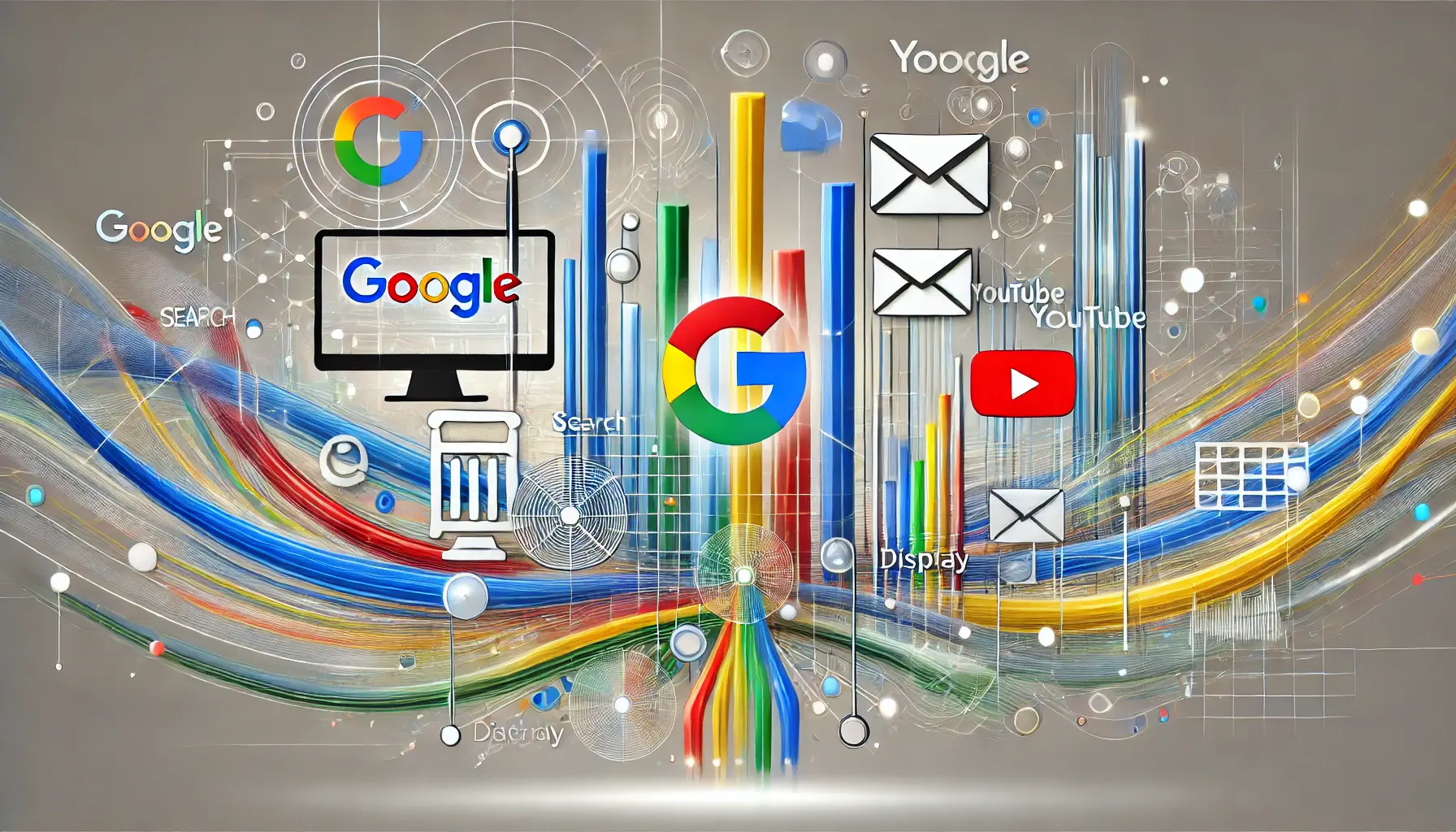

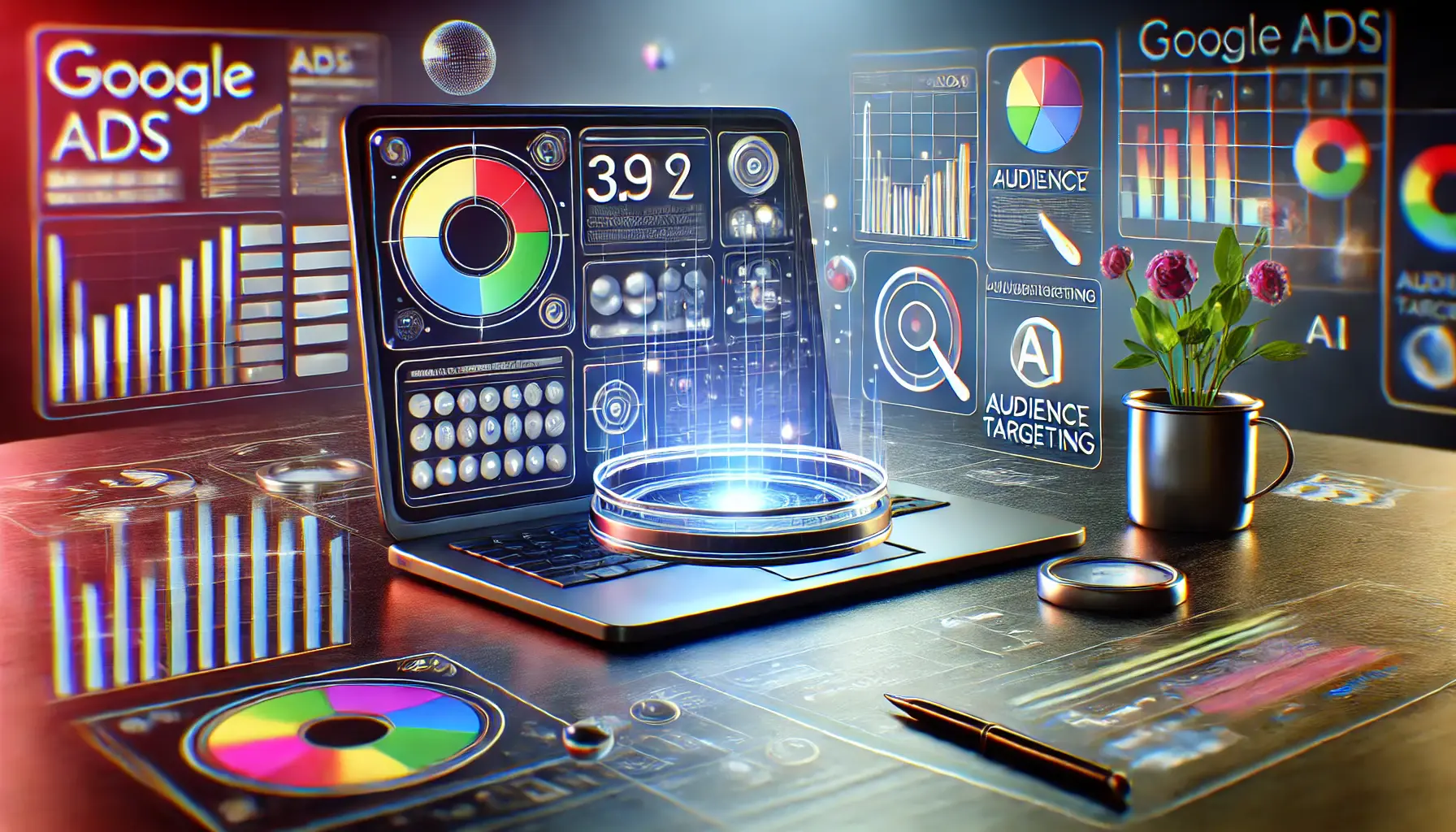


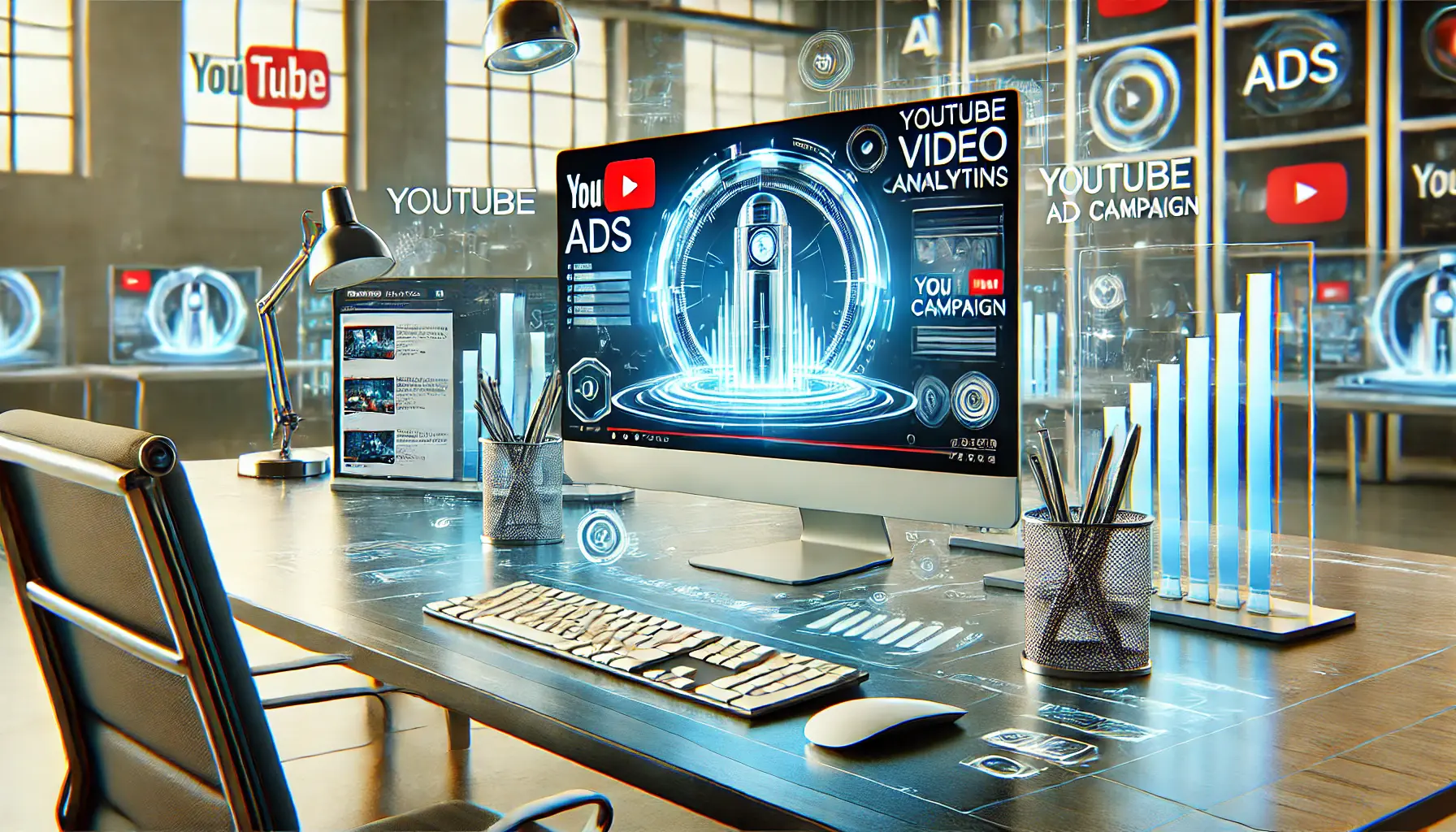
As I traversed the landscape of your thoughts, I couldn’t help but marvel at the clarity of your expression and the elegance of your prose. Your writing is not just a conveyance of information; it’s an art form that transcends the ordinary. It’s a literary dance where each word pirouettes with grace, leaving the reader spellbound.